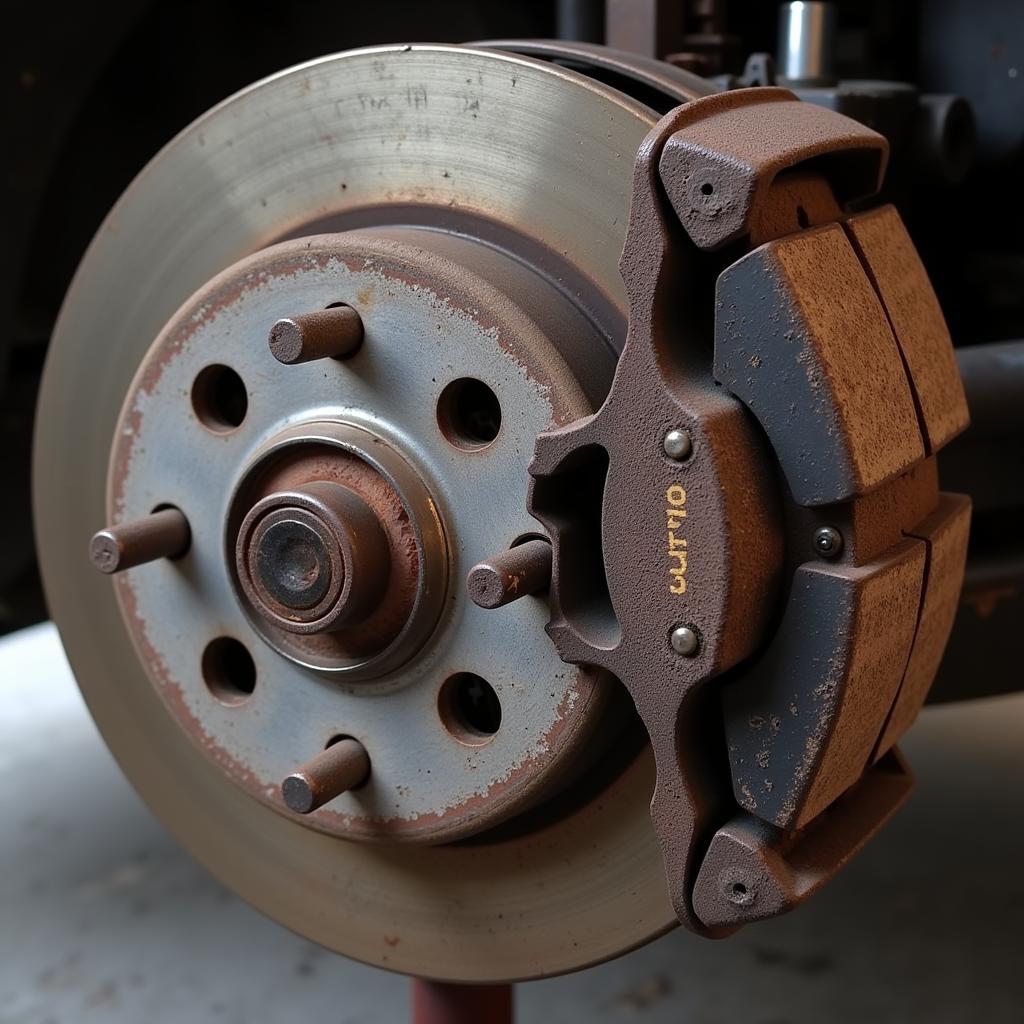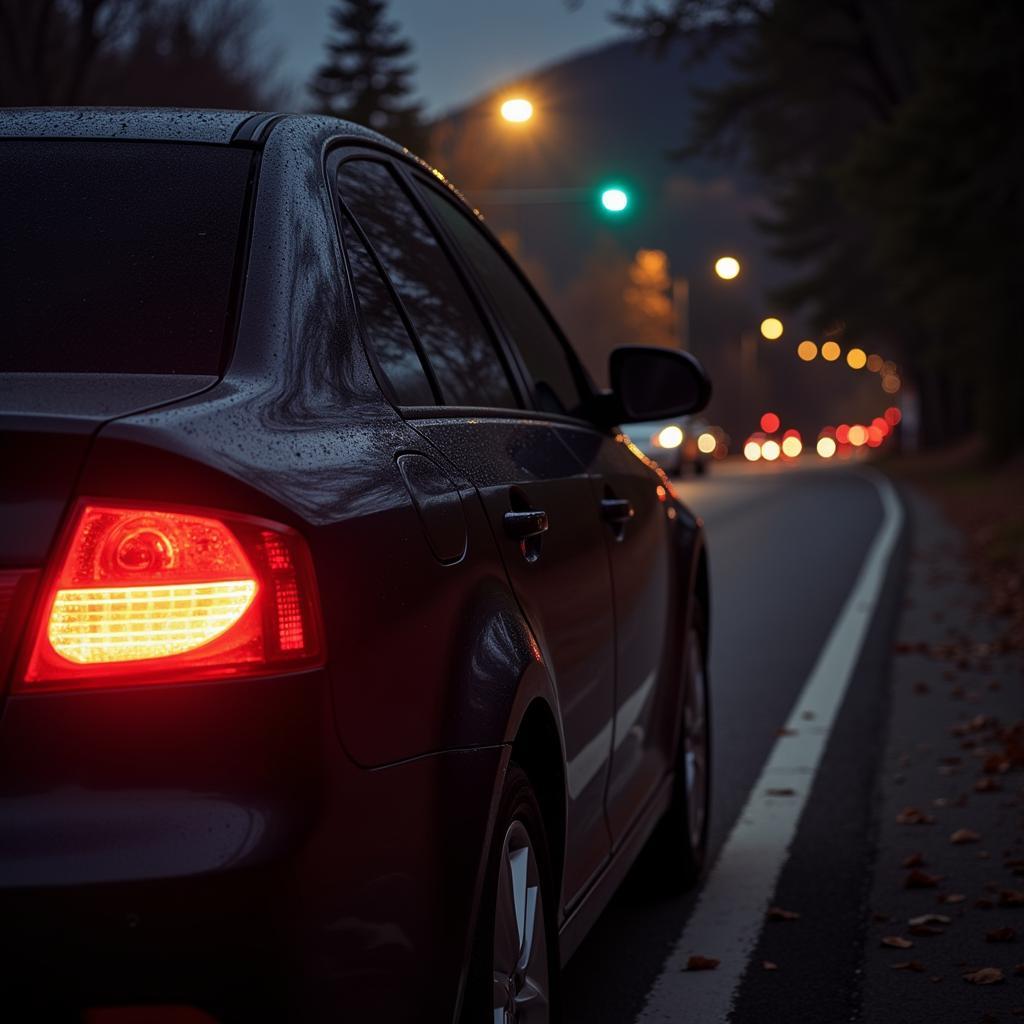The red brake warning light on your dashboard is a crucial safety feature, designed to alert you to potential problems within your vehicle’s braking system. When illuminated, it signals a fault within the red brake warning light circuit itself or a critical issue with your brakes that requires immediate attention.
What Triggers the Red Brake Warning Light Circuit?
The red brake warning light circuit is connected to several components within your braking system. When the circuit detects an abnormality, it illuminates the warning light on your dashboard. Here’s a breakdown of common triggers:
-
Low Brake Fluid: This is the most frequent culprit. The circuit includes a sensor in your brake fluid reservoir. If the fluid level drops significantly, often indicating a leak, the sensor triggers the warning light.
-
Parking Brake Engaged: Leaving your parking brake even partially engaged can trigger the light. The circuit is designed to remind you to disengage it before driving.
-
Brake Pad Wear: Many modern vehicles have sensors in the brake pads that monitor wear. When the pads wear down to a certain level, the sensor triggers the warning light, indicating it’s time for a replacement.
-
Hydraulic System Malfunction: A problem within the hydraulic system, such as a leak in a brake line or a failing master cylinder, can cause a pressure drop detected by the circuit, illuminating the warning light.
-
ABS Issue: While a dedicated ABS warning light usually exists, some vehicles might use the red brake warning light to indicate a problem with the Anti-lock Braking System (ABS).
Diagnosing the Problem: Beyond the Obvious
While a glowing red brake warning light might seem straightforward, pinpointing the exact cause requires a systematic approach.
-
Check the Obvious: Begin by ensuring your parking brake is fully disengaged. Next, visually inspect your brake fluid level. If it’s low, carefully top it off with the correct fluid type specified in your owner’s manual. If the light persists, further diagnosis is necessary.
-
Inspect for Leaks: Look for signs of brake fluid leaks around the master cylinder, brake lines, and near the wheels. Leaks can range from small drips to noticeable puddles. If a leak is detected, it necessitates immediate professional attention.
-
Brake Pad Inspection: Visually check your brake pads through the wheel spokes. If you notice the friction material is significantly worn down or you see a wear indicator touching the rotor, it’s time to replace the pads.
 brake pads worn down
brake pads worn down
-
Professional Diagnostics: Issues beyond low brake fluid, a disengaged parking brake, or worn pads usually require professional expertise. Mechanics use specialized diagnostic tools to read error codes from your vehicle’s computer, pinpointing the specific fault within the red brake warning light circuit or braking system.
“Modern cars rely heavily on electronic sensors within the braking system. These sensors provide valuable data to your car’s computer, aiding in accurate diagnosis and repair,” says automotive engineer, Emily Carter.
What Happens if the Red Brake Warning Light Comes on While Driving?
If the red brake warning light illuminates while you’re on the road, it’s crucial to react promptly and safely:
-
Stay Calm: Panicking will only worsen the situation.
-
Find a Safe Spot: Safely and gradually slow down your vehicle, activate your hazard lights, and pull over to a safe location off the road.
-
Assess the Situation: If you suspect a brake fluid leak or a complete brake failure, do not attempt to drive further. Call for roadside assistance immediately.
 car pulled over on side of road with hazard lights flashing
car pulled over on side of road with hazard lights flashing
-
Caution When Driving: If you must drive a short distance to a safe location, do so with extreme caution. Be prepared to apply the brakes with increased force and anticipate extended stopping distances.
“Remember, ignoring a red brake warning light can have serious consequences. Your safety and the safety of others on the road is paramount,” warns senior mechanic, David Miller.
Red Brake Warning Light Circuit: FAQs
1. Can I drive with the red brake warning light on?
It’s highly discouraged. While driving short distances with caution might be possible in some cases, it’s crucial to address the underlying issue immediately. Driving with a compromised braking system puts you and others at risk.
2. Is it expensive to fix a red brake warning light issue?
The cost varies significantly depending on the root cause. A simple brake fluid top-up is inexpensive, while repairs like replacing a master cylinder or brake lines are more costly.
3. How often should I check my brake fluid?
It’s a good practice to visually inspect your brake fluid level at least once a month. Look for any significant drop in the reservoir.
4. Do I need to replace all my brake pads at once?
While replacing brake pads in axle pairs (both front or both rear) is generally recommended for even brake wear and handling, it’s not always strictly necessary. Your mechanic can advise on the best approach based on your vehicle and pad wear.
5. Can a faulty brake light switch trigger the warning light?
While a faulty brake light switch can lead to issues with your brake lights, it usually doesn’t directly trigger the red brake warning light. The warning light circuit primarily focuses on the hydraulic braking system and related components.
Conclusion
The red brake warning light circuit serves as a vital safety net for your vehicle’s braking system. Understanding its purpose and the potential triggers empowers you to respond effectively and prioritize your safety on the road. Remember, when it comes to brakes, err on the side of caution. If your red brake warning light illuminates, seek professional diagnosis and repair without delay.
